– Grace Lee Boggs
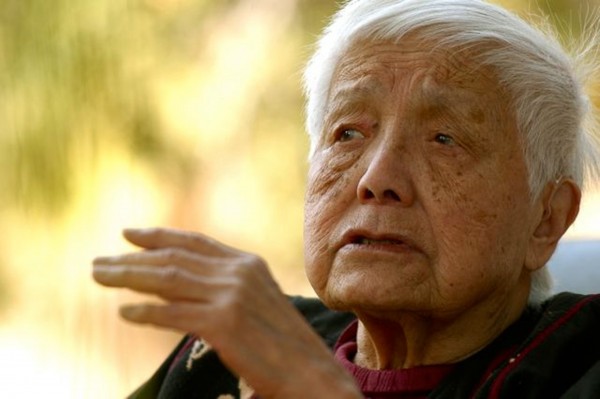 Grace Lee Boggs, who recently passed away at age 100, spent much of her life in what she described as the “great humanizing movements of the past seventy years- the labor, civil rights, Black Power, women’s, Asian American, environmental justice and antiwar movements.”
Grace Lee Boggs, who recently passed away at age 100, spent much of her life in what she described as the “great humanizing movements of the past seventy years- the labor, civil rights, Black Power, women’s, Asian American, environmental justice and antiwar movements.”
Grace Lee Boggs was a research associate of radical Caribbean Marxist CLR James, organizer among Socialists, activist for black Detroit Auto Workers, a colleague of Malcolm X, facilitated and promoted a network of small scale community gardens across abandoned neighborhoods in Detroit, organized youth leadership programs called “Detroit Summer,” and came to argue for a people oriented vision of radical, deep engagement in one’s community to create connections and tangible good. Born in Providence, educated in New York City, she lived, married, organized and passed away recently in her beloved Detroit, Michigan.
After being born in Providence, Grace Lee Boggs’ family moved to New York, and she grew up in Queens. Providence’s Chinatown was mostly eradicated by the urban renewal and highway construction programs of the 1950s and 1960s. Lee Boggs studied at Barnard College on a scholarship, and earned a PhD from Bryn Mawr College in 1940. Discrimination and prejudice limited her ability to work as an university academic, and she took a job as a research librarian. She became a collaborator with CLR James and Raya Dunayveska, Marxists who were critical of both of the Soviet Union and United States (not a popular position in Cold War politics).
In a Cold War era book she helped write with James and Dunyaveska, “State Capitalism and World Revolution,” Lee Boggs described the types of violence perpetuated against ordinary people around the world by both the “stranglehold of Stalinism” and the United States. In the 1950s, she and her peers wrote:
“Whether democratic or totalitarian, both types of society are in permanent decline and insoluble crisis. Both are at a stage when only a total reorganization can lift society a stage higher. It is noteworthy that in the United States the capitalist class is aware of this, and the most significant work that is being done in political economy is the desperate attempt to find some way of reconciling the working class to the agonies of mechanized production and transferring its implacable resistance into creative cooperation. That is of educational value and many of its findings will be used by the socialist proletariat. In Russia this resistance is labeled “remnants of capitalist ideology” and the whole power of the totalitarian state is organized to crrush it in theory as well as fact.”
In her last book, The Next American Revolution: Sustainable Activism for the 21st Century, she writes, “I came to Detroit in the early 1950s because as a Marxist I wanted to be part of a revolution in which the workers n the auto factories would take the struggles of the 1930s to a higher level by struggle for worker’ control of production in the plant. My main difference with traditional Marxists was my belief that blacks, women, and young people, and not only workers, would play pivotal roles in this revolution.”
She noted, “Living with Jimmy Boggs (her husband, Alabama born, African American autoworker and labor organizer) it was not long before I realized that my ideas had come mostly out of books and that my expectations had little or no relationship to the reality that was rapidly changing around me. When I began living in Detroit in 1953, Jimmy, a member of the United Auto Workers, was still mainly engaged with his fellow workers in struggles in the plant against automation and speed-ups (which workers in the plant called man-o-nation). ”
Jimmy came to see that high-tech automation was changing the industry, and that the role of workers in car production would be irrevocably different. He and Grace became active in Black Power circles, seeking to mobilize young people. When the riots (or rebellions) of the late 1960s broke out, both came to reflect that militant organizing in itself was not a path to broad social transformation, even if real expressions of oppression and frustration.
As she wrote, “…our main responsibility as revolutionaries was to go beyond protest politics beyond just increasing anger and outrage of the oppressed, and concentrate instead on projecting and initiating struggles that involve people at the grassroots in assuming responsibility for creating new values, truths, infrastructures, and institutions.”
She saw many movement leaders become establishment politicians. She felt that without actually, creatively challenging and changing the rules, habit and structures of governance, the same interests would be promoted, by design, and regular people would be harmed. She saw political figures in Detroit spend huge amounts of time, money and energy working to hold onto a rapidly automating auto-industry, and little in creative thinking for building alternatives and opportunity for the actual people left behind by automation. Much of her later life was spent founding community organizations and ways for people to organize and build a future themselves, different from the one so often dictated to them.
Grace Lee Boggs, born in Providence, wrote, “…we need to recognize that the aptitudes and attitudes of people with BAs, BSs, MBAs, and PhDs bear a lot of the responsibility for our planetary and social problems… [the challenge is] creating a new American Dream whose goal is a higher Humanity instead of a higher standard of living dependent on Empire.”
Much of this remembrance gratuitously quotes from Grace Lee Boggs’ “The Next American Revolution: Sustainable Activism for the 21st Century.” Please check out her work.
]]>
I was among the many Americans who felt 9/11 indirectly – and yet, how indirect was it? My mother taught at school where a parent was killed in the attack. My high school English teacher’s friend from childhood was a firefighter who was killed. College friends had high school classmates whose parents were killed, or who could recount the smoke billowing over their homes. An innocent man was arrested in the Providence Amtrak Train station in a spasm of paranoia. I saw image after image appear on television screens, read commentary, wrote my own, and tried to make sense of what happened –where were we? Can we wake up?
I was a suburban American child of the 1990s, a decade, in certain ways, for certain Americans, of prosperity and growth. From malls to condominiums, from minivans to MTV, from the Gulf War to Kosovo, from Pat Buchanan to Britney Spears, from Macs to PCs, the 1990s brought with it an explosion of digital technology, an unmatched period of United States power, dreams, and lusts.
What country did I grow up in? Generally speaking -a wealthy one. A place where history had ended – where the great struggles involved fighting consumerism and moving beyond materialism. As a very young activist, I felt that my biggest challenge would be to try to do something for worker rights internationally – how could effects of international shopping be made equitable? How could the rights of workers in China, Mexico and the US be guaranteed?
9/11 shook me. Did we also have to now organize to stop wars? What about worker rights? What about immigration? I have not done enough for my original hope of fighting for workers rights. I’ve been active in education and local work, but 9/11 shook some of my intentions, and perhaps made education a bit more attractive, in the hopes that by promoting an education of history and diversity, less violence would happen in the future.
In many ways, the 1990s saw a continuation of the shiny promises of the “return to order” of Reaganism. Reagan promised an end to the cultural confusion of the 1960s and 1970s- he promised a strong America, a weak welfare state, and a stronger military. His order was based on undermining the social supports – Social Security, Unions, well-funded public universities and affordable higher education- that had produced the Great American Middle Class of the Post War period. Reagan and his cohort believed in the beauty and violence of disaster capitalism – the freedom to grow and collapse, rather the slow stability of well paid, well supported work and education to promote a broadly wealthy society. In exchange for that broad middle class, policies favored the pocketbooks of millionaires and billionaires (and the hopes and chance of becoming a millionaire) – and rhetoric grew of the unworthy or hopeless poor, the corrupt unions against the pure free market, the holy believers against the secular university. There was something comforting in the world of Reagan’s suburbs – but over the decades many suburban homes were paid for with unrealistic mortgages, many families had to work two jobs not out of choice but to maintain a semi-wealthy lifestyle, and many children were forgotten or left to play with toys.
9/11 was a shock to this American urban/suburban world I had grown up in. The America I had known- safe, secure, powerful , isolated– was scared. I remember my mother made me survival packs to take to school in case there was a terrorist attack. I remember an eerie feeling that people in my high school building, constructed in 1925, had experienced many disasters before – World War II, the murders of President John, Minister King, and Candidate Robert Kennedy, the saga of Vietnam, the Gulf War. All these conflicts had happened, and my high school was still there. People in the halls before me had lived and responded to disasters – and life went on. But it was still uncertain, and always changing.
In so many ways, isn’t our national story, our international story, linked to our daily lives? I’ve had classmates who are veterans of the Iraq and Afghan wars. I’ve had friends try to join the army, and worry for them has increased greatly because of the wars. I’ve attended protest rallies, lectures, and peace vigils, written letters to the editor, argued with friends and strangers, and tried to make sense of what is going on. I’ve been in an American school building closed because of physical neglect as billions of dollars are spent on war machines and drones. I was in New York City with my best friends the night the Time Square Bomber attempted his mayhem. I’ve written to friends in London following an attempted bombing in Piccadilly Circus. I’ve read poignant essays on continuing on despite the threat of terror, one of the most striking for me being on life in Bombay following a terrorist shooting rampage. My grandparents once visited Italy simultaneous to an airport bombing in Rome during the Years of Lead (when left and right wing terrorists killed dozens, if not hundreds, of everyday people in the pursuit of a cause). Even in hellish times, growth happens when people connect.
Even in pain, people can overcome when they connect. In thinking about the violence and the loss, some people use memories to build walls. Others to connect across barriers. What type of country we become, and the type of people we will be, in the next ten years and beyond, will be greatly shaped by us drawing inward or finding better ways to connect.
]]>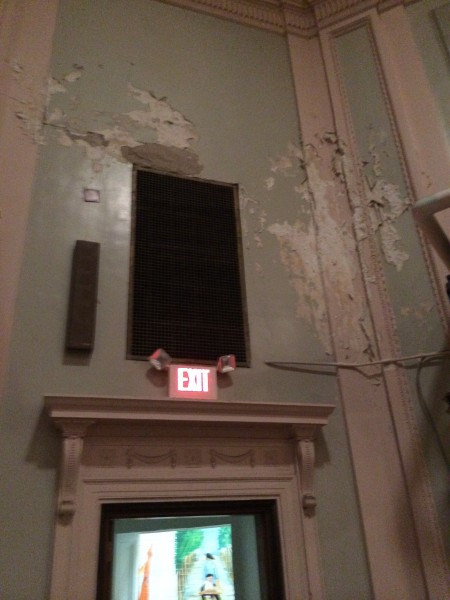 6,864 young Rhode Islanders attended public school buildings that the state declared, “need major renovations or need to be replaced,” according to a 2013 RIDE report that detailed more than $1.7 billion in repairs needed to ensure the health and safety of students, teachers, staff and families in all Rhode Island public schools. In Pawtucket alone, over $108 million in repairs were needed – two years ago.
6,864 young Rhode Islanders attended public school buildings that the state declared, “need major renovations or need to be replaced,” according to a 2013 RIDE report that detailed more than $1.7 billion in repairs needed to ensure the health and safety of students, teachers, staff and families in all Rhode Island public schools. In Pawtucket alone, over $108 million in repairs were needed – two years ago.
In response to advocacy around this ongoing shame, Governor Raimondo proposed a $20 million budget line item dedicated to school repairs, the first time the state has invested any money in school construction since 2011. The cash she’s offering is embarrassing and disrespectful to thousands of families. The renovation of a single Providence public middle school in a very politically connected district- Mt. Hope – in 2009 cost $35 million. For comparison, the amount of money the state has authorized for a new parking garage in downtown Providence is $40 million.
As part of the 2013 report, the RIDE team asked district officials to self rank schools on a 1-4 scale, 1 being well-maintained, 4 being in serious need of repair. The school ratings are “a self-reported number that each district assigns based on their general condition.” 14 schools designated themselves “Level 4.” For a sobering perspective, Gilbert Stuart Middle School, seen with the crumbling ceiling, was ranked a 2 in Providence.
An additional outrage is that five of these 14 “Level 4” schools were enrolled beyond their intended student capacity, with three schools in Providence and Central Falls being overcrowded by more than 100 students.
Which schools were in the most need according to these district reported metrics? How many students attend these schools? Here’s the infamous list.
1. East Providence High School – East Providence (1952), Enrollment: 1676, Capacity: 2000 (EP is the largest high school in Rhode Island)
2. Mt Pleasant High School – Providence (1938), Enrollment: 978, Capacity: 1315
3. Central Falls High School- Central Falls (1927), Enrollment: 848, Capacity: 693 (You read those numbers correctly)
4. Barrington Middle School- Barrington (1967) Enrollment: 777, Capacity: 950
5. Dr Harry Halliwell Memorial School -North Smithfield (1957), Enrollment: 359, Capacity: 330
6. Reservoir Avenue School – Providence (1971), Enrollment: 306, Capacity: 149 (You read those numbers correctly)
7. Wilbur and McMahon Schools- Little Compton (1929), Enrollment: 293, Capacity: 350
8. Cowden Street School– Central Falls (Unreported), Enrollment: 282, Capacity: 180 (You read those numbers correctly)
9. Sowans Elementary- Barrington (1963) Enrollment: 275, Capacity: 350
10. Cranston-Calvert School -Newport (1876) Enrollment: 253, Capacity: 374
11. William J Underwood School – Newport (1962), Enrollment: 247, Capacity: 240
12. Dr. M. H. Sullivan – Newport (1955), Enrollment: 222, Capacity: 416
13. James R D Oldham School- East Providence (1952), Enrollment: 177, Capacity: 416
14. Coggeshall School – Newport (1897), Enrollment: 171, Capacity: 242
According to the RIDE report, Level 4 schools “need major renovations or need to be replaced. The condition of facilities given a rating of 4 is of particular concern because it may hinder the ability to deliver a 21st Century education.” Rhode Island can do so much better for the 6864 young people and families who are part of these schools.
]]>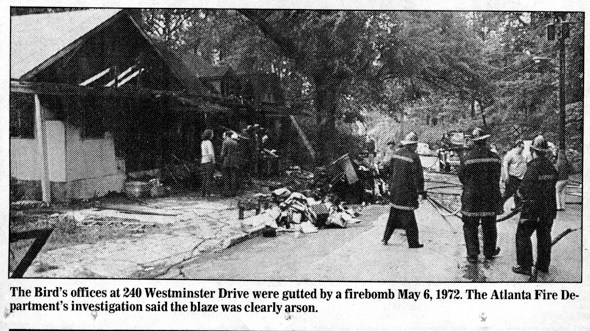 “The civil rights movement did not spring up whole cloth in 1960. Rosa Parks was not an isolated individual too tired to stand on the bus. She belonged to a network of political and social justice organizers who had worked for several decades laying the groundwork for the sixties and seventies. The older experienced foot soldiers for social and economic justice gave us the advantage of history.”- Sally Gabb
“The civil rights movement did not spring up whole cloth in 1960. Rosa Parks was not an isolated individual too tired to stand on the bus. She belonged to a network of political and social justice organizers who had worked for several decades laying the groundwork for the sixties and seventies. The older experienced foot soldiers for social and economic justice gave us the advantage of history.”- Sally Gabb
Sally Gabb told me she recently wrote a chapter in a book; she died earlier this summer. After her passing, I started looking for her writings. I heard in a movie, “You can still learn from someone when they’re gone.” It’s true.
The late Sally Gabb, a human rights activist, journalist and teacher, always talked about the importance of working in community to achieve change and connection. I connected with Sally and her wife Beth at our Unitarian-Universalist congregation, Bell Street Chapel in Providence’s West End. She was fascinated by the role of the unconscious in our actions, and was leery of big talk that overlooked the day to day work that makes experiences real and connected (and hard to achieve).
As she told Options Magazine, “While it’s great that stores like Target sell shirts that proclaim “girl power,” we need to make sure such commercial hijacking of slogans doesn’t invalidate actual work – politically, socially, legally – to achieve an end to discrimination against women.”
In the book Sally contributed to, Voices from the Underground:Insider Histories of the Vietnam Era Underground Press, she recounted successes and struggles at an alternative paper, The Great Speckled Bird, she and other radicals wrote for in 1970s Atlanta. At its peak the paper had over 3,000 mail subscriptions and 20,000 circulation copies per issue. Topics ranged from music culture to foreign policy, from the Black Panther Party to desegregation, from socialist politics to feminism.
She wrote, “The Bird’s midwives were, naturally, a collection of current or former graduate students. Who else has been so groomed to take themselves so seriously? Budding historians philosophers they were, mostly men, with women in the shadows, women on the brink of bursting forth to be heard. They were men and women joined by a certain lesson: The South.”
For Sally, what made The Bird fascinating was it’s struggle to run itself like the ideals it professed- attempts at collective leadership, independent leftist politics, shared work (from the tedious task of labeling to strategy brainstorming), the Progressive stream of Southern history, rock and roll, gay liberation, anti-war.
“Atlanta police, for various reasons,” according to the New Georgia Encyclopedia, “arrested people selling the newspaper on street corners, on charges ranging from jaywalking to distributing pornographic material. City building and fire inspectors routinely visited the house on Fourteenth Street in which the staff worked, and schools banned the publication from their campuses. In 1972 the Bird’s offices were firebombed.”

The Bird was an attempt, as she put it, to “run an enterprise against capitalism.” It was collectively run, and tasks were rotated but not everyone agreed on all issues- political or design. Sally notes, “We did establish policies that would draw the line at advertising that blatantly contradicted our politics. The choices weren’t easy however. The Bird was heavily supported by advertisements from so-called “Hippie Capitalism” – the clothing stores, head shops, and music related businesses that knew they could reach consumers through our pages. Such advertisements often appealed to traditional male domination, and to the view that women exist as sex objects for men.” I’m reminded of the back pages of the defunct Providence Phoenix.
Looking back, she said there were some things very naïve about the work – but she was proud to have documented labor struggles, desegregation, the fight for a more equitable workplace (in the paper’s office and without), and to work with a group to create a community, however imperfect, committed to documenting and encouraging radical change. She was perhaps most proud to learn from and interview long-time labor and civil rights organizers who had been working for change in the South since the Depression.
After the Bird, Sally worked at a Lesbian Print Collective before “her life’s work of adult education.” I’m still learning from Sally.
]]> Rhode Island is a little smaller.
Rhode Island is a little smaller.
A good friend, Sally Gabb, passed away, after a struggle with cancer. I spoke with her a few weeks ago. She and her wife, Beth, had been together for over 20 years. They only could legally be married for the last 3 or 4 in Rhode Island.
I know Sally and Beth from Bell Street Chapel, our West End Unitarian Universalist congregation. They were known to indulge a love of diners (Seaplane for breakfast!), pot lucks, gardening, justice work, and were gratuitous with their wonder and compassion.
Sally was a proud Civil Rights-era veteran and 70s veteran activist. She was from Virginia, went to Duke, renounced her background, became involved in the sit-ins, became a journalist, did radical organizing work and LGBT advocacy in Atlanta. She moved to Rhode Island in the 1980s, and has been dedicated in adult education in Providence (at the Genesis Center) and Fall River (at Bristol Community College). Hundreds of first generation students gained new skills through her work.
She fell in love with Beth when she saw Beth on her motorcycle. In the years ahead, they helped raise a son, supported neighbors, ran an ice cream parlor, bought a home, created a garden, lived life. Food– and more important — sharing it with others -was so vital to Sally and Beth’s love as a couple.
Sally loved to read, constantly, voraciously, and to plan, think and act about injustice, faith, community change and growth. She taught me to find allies, that a person doesn’t have to do things alone in change work- in fact, they can’t.
Sally was involved in the civil rights movement, women’s movement, medical marijuana regulation, marriage equality – and constantly wanted to listen, laugh, and be positive. She was a great cartoonist, and liked crafty things- whether drawing cartoon sketches of the church at pond clean-ups to cutting out little construction paper feet for a “A Step Up” campaign.
She would show up at rallies and I remember her smiling that the big Providence Occupy march was like a reunion. She was a truly wonderful friend and mentor.
As she became more sick, especially this last year, she and Beth went to Europe on a trip with her niece, and on a hot air balloon ride in Sedona, Arizona (She loved it). She wanted to connect me with a friend who was a public defender in Oakland.
I’ll miss her. I thought you would like to know about her.
]]>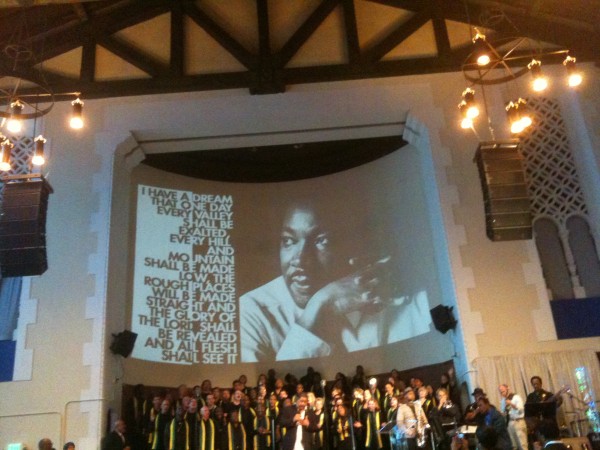 Glide Memorial is a wild celebration of life in San Francisco, at the intersection between the working class Tenderloin neighborhood, and the Mid Market world of shops, street cars, and high-end hotels.
Glide Memorial is a wild celebration of life in San Francisco, at the intersection between the working class Tenderloin neighborhood, and the Mid Market world of shops, street cars, and high-end hotels.
Whatever you experience about wealth inequality in Rhode Island, hardly anywhere compares with the income gaps in the San Francisco Bay area. In one of, if not the, richest cities in America, hundreds of people tonight will sleep under highway bridges. People are lying on the street in drug induced dementia.
Glide is a church – a community – that has incubated dozens of non-profits, connects thousands of individuals, and has helped many heal and grow. Glide’s role is mediator and connector in a city that is often so strangely and starkly disparate and uneven. If every church in the US functioned like Glide, we would live in a different country.
The leaders who helped create the current version of Glide, Cecil Williams and Janice Mirikitani, intentionally have created a diverse community of doers, that attracts dozens of visitors every week.
Glide has been criticized for being too radical, too showy, untraditional, too establishment, over the top, disingenuous. Yet, day after day, people keep coming, people keep connecting, people keep growing, giving, laughing, together.
A Sunday celebration at Glide is disorienting – in a positive way.
The room is packed- hundreds of people. Some are very wealthy, some are very poor. The music is 70s soul and 60s gospel.
The choir has voices that tell stories- some of which, from the depths of their voice, you can tell they’ve been to hell, or at least its brink, and turned around, and kept fighting, kept growing and found a new way.
Gay and straight, from every ethnicity, this community gathers to sing – loudly – and clap – powerfully – and praise and inspire.
Radical inclusion is the style, ethos, and practice. For some humanists, Glide is a community and place of reflection and action. For some believers, Glide is a site of worship and action. Radical inclusion in service of justice is the ethos.
At the end of the celebration, this community – Black, White, Asian, Brown – holds hands, reaches up and sings “We Shall Overcome.”
At Glide, however, you do not sing “We shall overcome some day,” but, instead, “we shall overcome today.”
Today, not tomorrow, not in the beyond, but now.
As we’re reading about the cancers of racism, it’s worth holding up a reminder that even in this painful world – especially in this painful world – there are communities of people gathering and reaching to celebrate, support, and act for something healing, connecting, and better.
]]>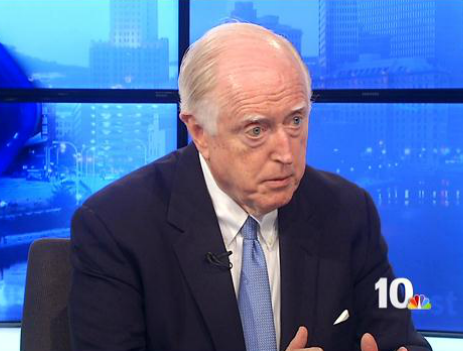 Rhode Island will not attract millennials, build a new economy, end homelessness or improve public schools by helping the Pawtucket Red Sox to move to Providence. Even according to Republican economist Greg Mankiw, 85% of economists oppose public subsidies of sports stadiums. Ideological journals from left to right, from National Review to Dissent, decry the giveaways and waste spent on stadiums for well connected owners.
Rhode Island will not attract millennials, build a new economy, end homelessness or improve public schools by helping the Pawtucket Red Sox to move to Providence. Even according to Republican economist Greg Mankiw, 85% of economists oppose public subsidies of sports stadiums. Ideological journals from left to right, from National Review to Dissent, decry the giveaways and waste spent on stadiums for well connected owners.
Here’s a few words from the critics…
1. James Hamilton, UC San Diego: “I am not aware of a recent example of a major sports facility investment that earned anything approaching a reasonable return on capital or turned out to be self-financing in terms of tax revenues.”
2.Grace Lee Boggs, Providence-born Detroit Civil Rights activist: “I am saddened by the short-sightedness,” Boggs said, referring to the recent building of more casinos and sports stadiums.”
3.Steve Lopez, LA Times: “It would be fun to have a pro football team to cheer and to boo… But as I’ve said before, the terms have to be right for citizens, not for AEG’s $7-billion man — Philip Anschutz — or for the band of barons who make up the National Football League.”
3. Joel Kotkin, an Urban Studies Fellow at Chapman University and author of The New Class Conflict:”… a fanciful approach towards economic development instead of building really good jobs. And except for the construction, the jobs created by stadia are generally low wage occasional work.”
4.Matt Connolly, writer with Mother Jones: “While there may be legitimate reasons for franchises to relocate—bankruptcy, low ticket sales, Jay-Z buying a stake—many recent threats to move have one common factor: stadium funding. If your local government decided against spending $400 million of public money to add a few more luxury boxes to Xtreme Cola Guzzle The Flavor® Memorial Arena, get ready to hear your team’s owner talking…”
5.Doug Bandow, National Review: “The primary justification for looting taxpayers to construct sports cathedrals is always “economic development.” …But that’s not the uniform experience. In D.C. itself you will have a hard time finding the renaissance that was supposed to be sparked by RFK stadium, which hosted the Redskins for years.”
6. Joan Didion, author, commentator: “What we had in the tarmac arrival with ball tossing then, was an understanding: a repeated moment witnessed by many people, all of whom believed it to be a setup and yet most of whom believed that only an outsider, someone too “naive” to know the rules of the game, would so describe it.”
Forget subsidizing sports stadiums. Funding a good old boy’s development scheme is not the answer to empower the working women and men of Rhode Island.
 If you can believe it, until 1998 school building construction was a local matter in Colorado. Functionally speaking, with the current moratorium on state aid for school construction and rehabilitation, this is the case in Rhode Island right now. In Colorado in the 1990s, and in Rhode Island today, young people in low-income, politically-weak areas are less likely to attend high-quality public school buildings than those in wealthier, politically-networked areas.
If you can believe it, until 1998 school building construction was a local matter in Colorado. Functionally speaking, with the current moratorium on state aid for school construction and rehabilitation, this is the case in Rhode Island right now. In Colorado in the 1990s, and in Rhode Island today, young people in low-income, politically-weak areas are less likely to attend high-quality public school buildings than those in wealthier, politically-networked areas.
Since 2008, however, Colorado has administered a competitive grant application for districts based on diverse state funding streams, including, since 2012, a small percent of taxes from marijuana sales.
“The state’s voters in 2012 legalized pot sales – and taxed them heavily – in part because the constitutional amendment promised that $40 million a year would go toward school construction across the state,” according to USA Today. “In the first full year of sales, however, the state expects to collect only about $17 million in special school taxes levied on the marijuana industry. Still, it’s better than what the state collected the year before: nothing.”
Colorado’s current state funding stream has its origins in a 1998 class action lawsuit (Giardino v Colorado State Board of Education), says Kori Donaldson s. “The lawsuit alleged that the state had not fulfilled its constitutional responsibility to establish and maintain a thorough and uniform system of public schools because of the deteriorating condition of many public schools and issues of overcrowding.”
In response, “Senate Bill 00-181 implemented the terms of a settlement, which required the General Assembly to appropriate $190 million for public school capital construction over a period of 11 years. In 2008, the General Assembly enacted the BEST act [Building Excellent Schools Today].
The BEST program distributes approximately $40 million a year. Yet, the demand for better schools in Colorado outpaces the funding supply, even with the BEST program. Colorado’s challenges include overcrowded classrooms and overstretched buildings (one principal, Melanie Moreno, noted, “Even if we hired more teachers, we wouldn’t have anywhere to put them.”)
Todd Engdahl argues, “The BEST selection process is unique in that the construction board has a certain amount of discretion in making its recommendations and because it makes its decisions request-by-request in an open meeting where applicants are allowed to make brief in-person pitches to the board, in addition to the voluminous applications they filed months ago…
The board uses a complicated process to cull the applicants. Projects require a majority roll-call vote to advance to a short list, but projects die if they don’t gain a majority, don’t get a second or fail to spark a motion at all.”
The Massachusetts model remains superior in that its application process has an emphasis on “urgency and need” in making decisions for construction, and provides a steady, consistent, and much larger funding stream. That said, Colorado shows a willingness to organize a formal, transparent grant process to make funding decisions, and the possibility of including new revenues.
Massachusetts and Colorado both have consistent funding streams to rehabilitate and construct school buildings. Rhode Island’s leaders have a great chance to be innovative and do right by students, families, and teachers.
]]>My hopes the wind done scattered.”
– Langston Hughes, ‘I’m still here’
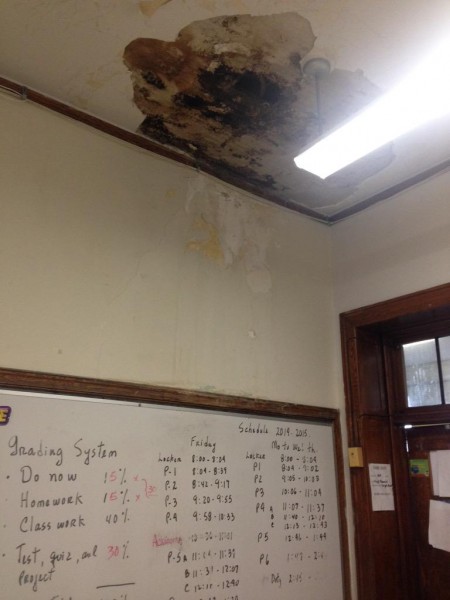
Too many Rhode Island children and teachers, particularly in low-income communities, work in schools that are decrepit.
Governor Raimondo recognizes the need to invest in our schools. In fact, she’s proposed $20 million to do so. A very important step and yet insignificant compared to other state and city infrastructure investments – the $22 million East Bay bike path renovations, the $43 million proposed Garrahy Parking Garage, and the $40 million 2012 road bond in the City of Providence.
Nevertheless, Raimondo’s plan is based – too loosely, I would say – on the Massachusetts School Building Authority.
“The bottom line is that the MSBA [Massachusetts School Building Authority] funding activity not only leaves the Commonwealth with better schools for our children, but continues to play a not insignificant role in boosting the economy of the state, providing jobs for thousands and thousands of our workers,” says the 2o14 report: The Economic Impact of MSBA Investments on the Massachusetts Economy.
Prior to the creation of the MSBA in 2004, the Bay State likewise had a complicated history with adequate supports for school buildings.
Clayton-Matthews and Bluestone note, “By the early 2000’s, the ‘temporary’ (Massachusetts school building assistance) program had become unsustainable, accumulating more than $11 billion in unfunded promises to local districts. By 2003, there were 428 projects on a waiting list to begin construction, and communities that actually broke ground, routinely waited years – sometimes decades – to receive their first reimbursement payment from the state.”
Our current predicament sounds similar. Over at WPRI, Dan McGowan reveals Rhode Island has “$600 million in [school] facility maintenance deferred since 2011.”
According to Clayton-Matthew and Bluestone, here’s the low down on the Massachusetts School Building Authority:
“Since 2004, the MSBA has made over $10.5 billion in payments to cities, towns and regional school districts, including full or partial payments to all of the eligible Waiting List Projects. In addition, the MSBA has completed 784 of the 788 backlogged audits inherited from the former program, saving the taxpayers of Massachusetts more than $1 billion in project costs and $2.9 million in local interest costs.
The MSBA’s grant program places tremendous emphasis on planning, due diligence and prioritization of scarce MSBA resources. The MSBA approves new projects through a competitive process that stresses need and urgency, and reimbursement can range from 31 to 80 percent of eligible project costs.
There are currently more than 300 construction, renovation and repair projects in the MSBA’s Capital Pipeline. The MSBA, which has a designated revenue stream of one penny of the state sales tax, collaborates with municipalities to invest approximately $500 million per year in schools across the Commonwealth.”
By contrast, Governor Raimondo’s proposed $20 million cannot simultaneously restore Mt Pleasant High School, bring modern science labs and a renovated auditorium to Gilbert Stuart Middle School, fix the pipes at Roger Williams Middle School – let alone spruce up additional schools in Pawtucket and North Kingston.
Discussion is in the air. Cumberland Senator Ryan Pearson has a bill more like Massachusetts’ successful system than Raimondo’s proposal. Providence Representative Aaron Regunburg wrote to his constituents, “while this is just a start and is not enough to solve our school infrastructure needs – I will do everything in my power to ensure that the final budget includes at least this level of additional funds.”
More delayed maintenance in Rhode Island won’t make future rehabs any cheaper or allow Rhode Islanders to benefit from the Massachusetts model of economic investment through school rebuilding and construction.
Unless Governor Raimondo’s plan is to let several thousand more children over the next few years learn in decaying structures, it’s time to start talking to leaders in Massachusetts. Rhody can learn their game plan – and then do it better!
]]> Until this new Congress, Rhode Island’s District 2 Congressman Jim Langevin served on the House Intelligence Committee, tasked with, among other duties, overseeing the US drone program. During his tenure on House Intelligence, Langevin also accepted tens of thousands of dollars from corporations that manufacture drones.
Until this new Congress, Rhode Island’s District 2 Congressman Jim Langevin served on the House Intelligence Committee, tasked with, among other duties, overseeing the US drone program. During his tenure on House Intelligence, Langevin also accepted tens of thousands of dollars from corporations that manufacture drones.
In fact, drone manufacturers are among Langevin’s most generous supporters, according to Open Secrets. The top 5 donors to Langevin’s 2014 campaign committee were:
1. General Dynamics ($32,050)
2. Democratic Party of RI ($19,800)
3. Northup Grumman ($15,200)
4. Raytheon Co. ($13,250)
5. Sheet Metal Workers Union ($12,500)
General Dynamics, Northup Grumman and Raytheon all manufacture drones. This is not the first time I’ve brought up the issue.
“It is not surprising that Congressman Langevin’s work in Congress is of relevance to the defense industry,” said Meg Geoghegan, Langevin’s spokesperson. “General Dynamics, Northrop Grumman and Raytheon are key players in our local economy, with General Dynamics Electric Boat alone planning to add 3,000 more jobs at Quonset Point by 2020. In fact, the Rhode Island defense sector supports more than 32,000 jobs overall. ”
The issue isn’t the defense industry. The issue is a Congressman taking money from the industry he was exercising oversight upon. Is that how the game is often played in Washington? Of course. Does it make it right? No. Especially when lives are involved.
In the fall 2014 election, Langevin spent $782,691 against first time GOP candidate and contractor Rhue Rheis, who spent a mere $13,548, according to Open Secrets. Did the incumbent really need the extra money from defense contractors to win against a first time Republican candidate who served in no previous elected office and didn’t even raise even $50,000?
When on the House Intelligence Committee, Langevin voted against “an amendment to require that U.S. agencies involved in drone wars produce annual reports in which they account for all deaths in U.S. drone strikes overseas and identify the civilians and alleged combatants killed. The amendment already passed the Senate Select Committee on Intelligence” in 2013.
Geoghegan, Langevin’s spokesperson, said, “Campaign donations are accepted in good faith with no strings attached, and do not influence Congressman Langevin’s policy work or voting record. He remains a strong advocate for campaign finance reform and transparency, and he is beholden only to the people of Rhode Island.”
In response to the December 2014 Senate Intelligence Committee report which revealed heinous instances of torture, Langevin stood on the side of decency, arguing, “Human rights must be preserved in times of peace and war, and I sincerely hope we can learn from this dark moment in our history.”
But in response to the use of drones, Langevin’s record is more evasive. Drones are used as deadly weapons to track and kill suspected terrorists. At times civilians have been killed. Langevin served on the committee reviewing the drone program, while also receiving money from drone manufacturers.
With the new Congress, Langevin no longer serves on the House Intelligence Committee. To show he is “beholden only to the people of Rhode Island,” Langevin should return donations from the industries he exercised oversight- or give the equivalent amount to charity. His action can serve as an example to incoming members on the House Intelligence Committee.
]]>